The Zpacks Duplex has been the go-to tent for ultralight hikers – including us – for years. But over that time, there has been one common criticism: the zipperless vestibules. In response, Zpacks released the Duplex Zip to cater to those who were concerned about splashback and sideways rain getting inside.
We put the Duplex Zip to the test to see how this new version compares to the standard Duplex, and to find out if it’s worth the added cost. Read on to see what we found during our 500-mile test hike on the Arizona Trail.
Quick Specs
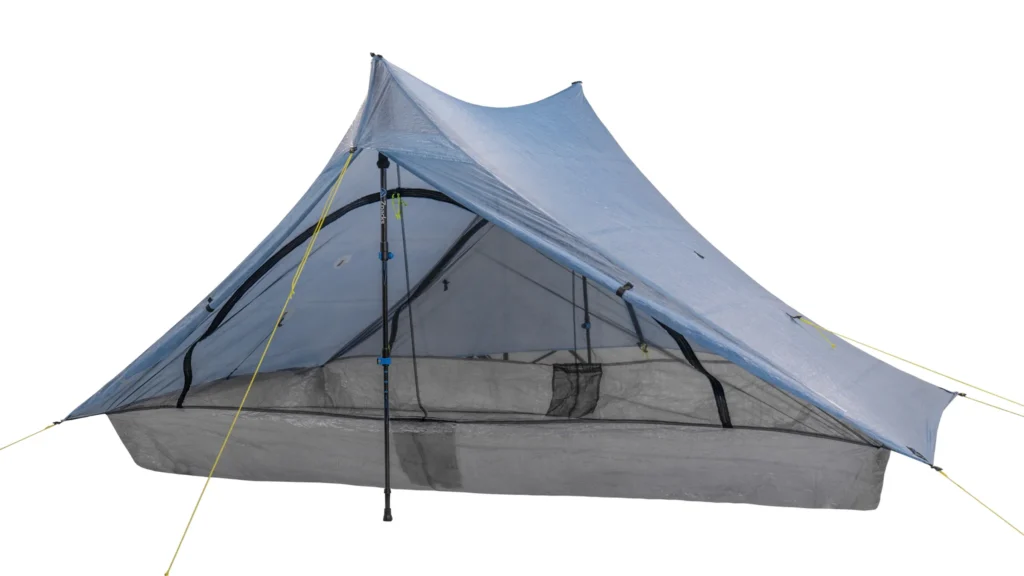
Zpacks Duplex Zip
Price: $699
Listed Weight: 20.4 oz.
Measured Weight: 20.5 oz.
Dimensions (LxWxH): 90 x 45 x 48 in.
Note: Weights do not include poles or stakes
Pros
- Ultralight
- Durable fabrics
- Packs small
- Excellent weather protection
- Great ventilation
- Spacious
- Easy to pitch
- Smooth zippers
- Large doors & vestibules
Cons
- Expensive
- Interior condensation
- Non-freestanding design
- Handle with care
- Difficult to shake out
- Pockets only okay
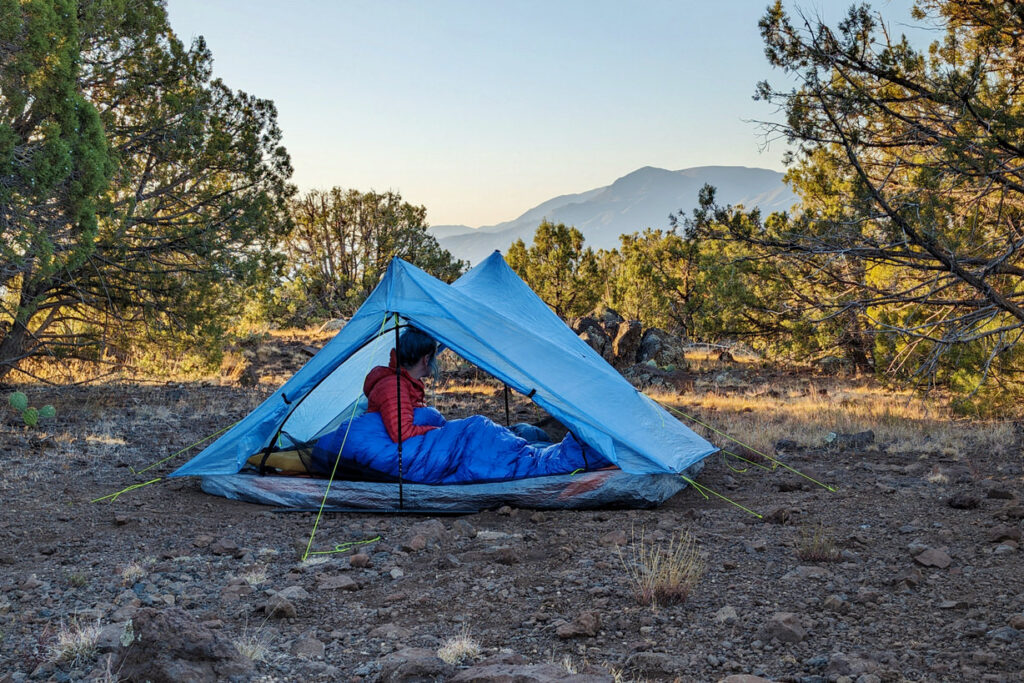
Pros
Ultralight
Just like the standard Duplex, the Duplex Zip is extremely light. At just 1 lb. 4.4 oz., it’s the second lightest two-person tent on our lists of the Best Backpacking Tents and Best Ultralight Tents (beaten out only by the standard Duplex).
This low weight is even more impressive when you consider that Zpacks doesn’t leave out any of the functional details included on similar tents. It has fully waterproof zippers on both vestibules, peak vents, and magnetic door closures.
So how does the Duplex Zip achieve such a low weight? The main reason it’s so light is because it’s non-freestanding. This means there are no tent poles – it relies on trekking poles or separate carbon fiber poles for the structure. But the Duplex Zip is also lighter than other very similar non-freestanding tents.
How does it do that? With some smart material choices. Let’s look at the nearly identical Hyperlite Mountain Gear Unbound 2 which is listed at the same interior area as the Duplex Zip (28 sq. ft.) but weighs about 4 oz. more. The Unbound floor is actually made with a lighter material (0.8 oz./sq. yd. DCF) than the Duplex floor (1 oz./sq. yd. DCF), but the Duplex uses a lighter mesh and lighter guylines. These small weight differences add up when spread out over a whole tent, and that’s how the Duplex Zip remains one of the all-time lightest tents on the market.
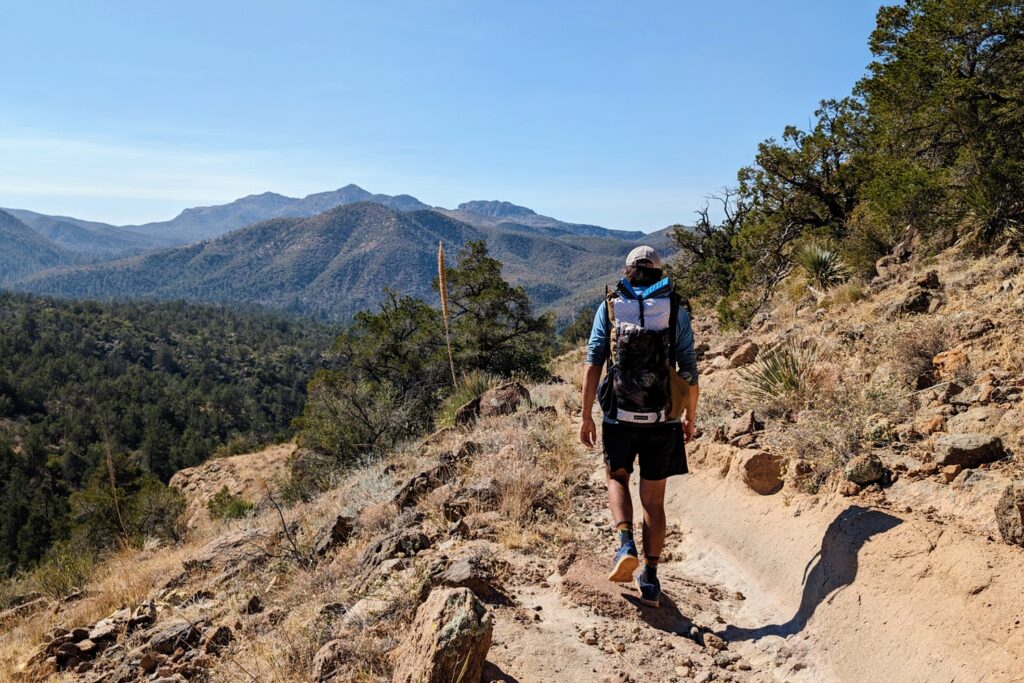
Durable fabrics
The Duplex Zip is constructed with .55 oz./sq. yd. Dyneema Composite Fabric (DCF) on the canopy and 1 oz./sq. yd. DCF on the floor. These incredibly light fabrics have a high tensile strength that makes them far more durable than their weight would suggest.
We’ve used a standard Duplex (made with the exact same fabrics) for thousands of miles with no major tears or strains on the fabric, and it’s still going strong. We tested the Duplex Zip over 500 miles of hiking through the unforgiving Sonoran Desert, and the result was the same.
Often the first things on a tent to go are the zippers. Zpacks planned ahead for this and included two replacement zipper sliders with the Duplex Zip, and they designed the doors in a way that makes field repair easy.
Also included with the Duplex Zip is a length of repair tape for patching minor punctures and tears.
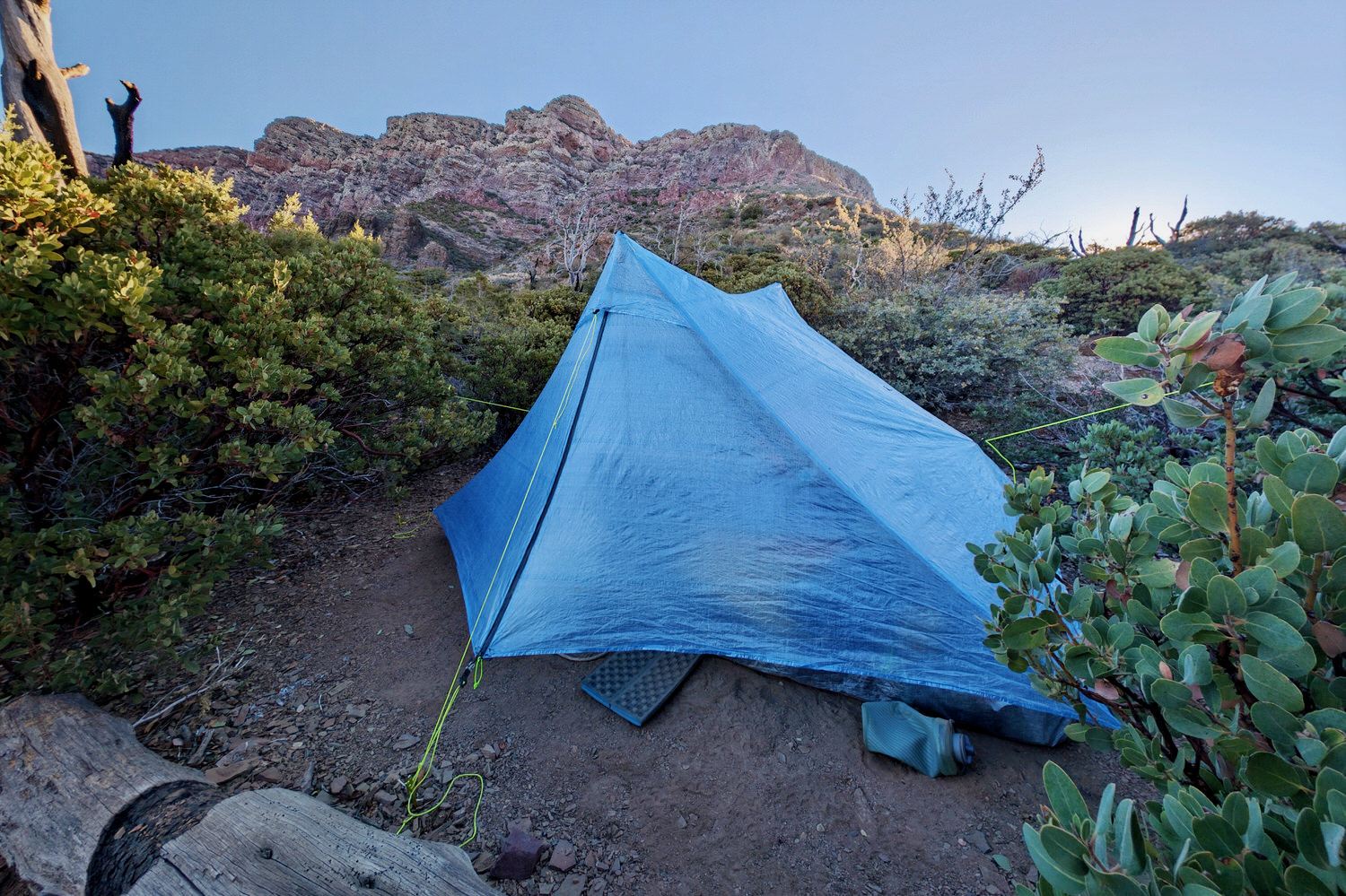

Packs small/stuff sack included
DCF tents generally don’t pack down quite as small as similarly designed nylon or polyester tents, but the Duplex Zip rolls up into a manageable size.
The real pro here, though, is the excellent stuff sack included with the tent. It comes with a Medium-Plus DCF Drawstring Sack (included on our list of the Best Stuff Sacks), which would run you $29 if you had to buy it separately. Many tentmakers try to cut a few grams by making the stuff sack just barely big enough to store the tent. But with the minimal effort the Duplex Zip fits right into the stuff sack without a fuss.
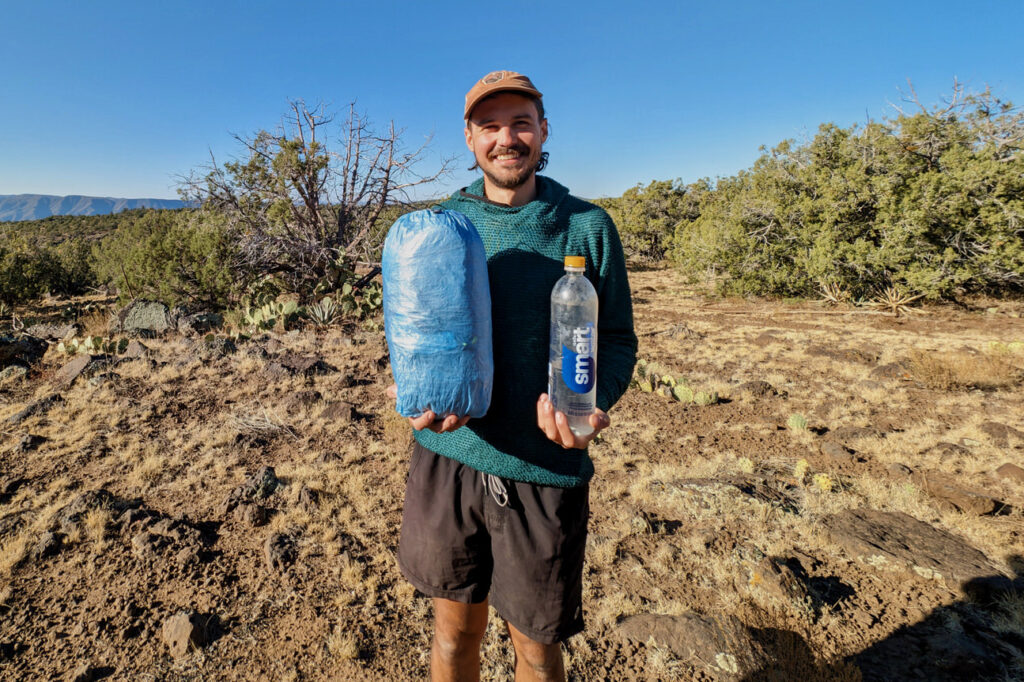
Excellent weather protection
The Duplex Zip readily sheds wind and rain thanks to the extra wall guyouts, factory-taped seams, inherently waterproof fabric, and the addition of waterproof vestibule zippers. And in the off-chance that rain does find its way under the vestibule, an 8 in. DCF bathtub floor keeps you well-protected from splashback.
One consistent criticism of the standard Duplex is that the hook closures on the ends of the vestibules leave a small gap where blowing rain could creep into the living space. We’ve weathered some pretty intense downpours in that tent and never found the vestibule closure to be much of an issue, but the Duplex Zip eliminates that potential problem entirely.
As if we hadn’t sung the praises of the DCF fabric enough, another huge benefit is that it doesn’t stretch and sag when wet. A tight pitch eliminates flat spots near the peak where water could pool up, provides extra structure to protect against wind, and helps shed interior condensation. With this tent, if you go to sleep with a taut pitch, you’ll wake up with a taut pitch.
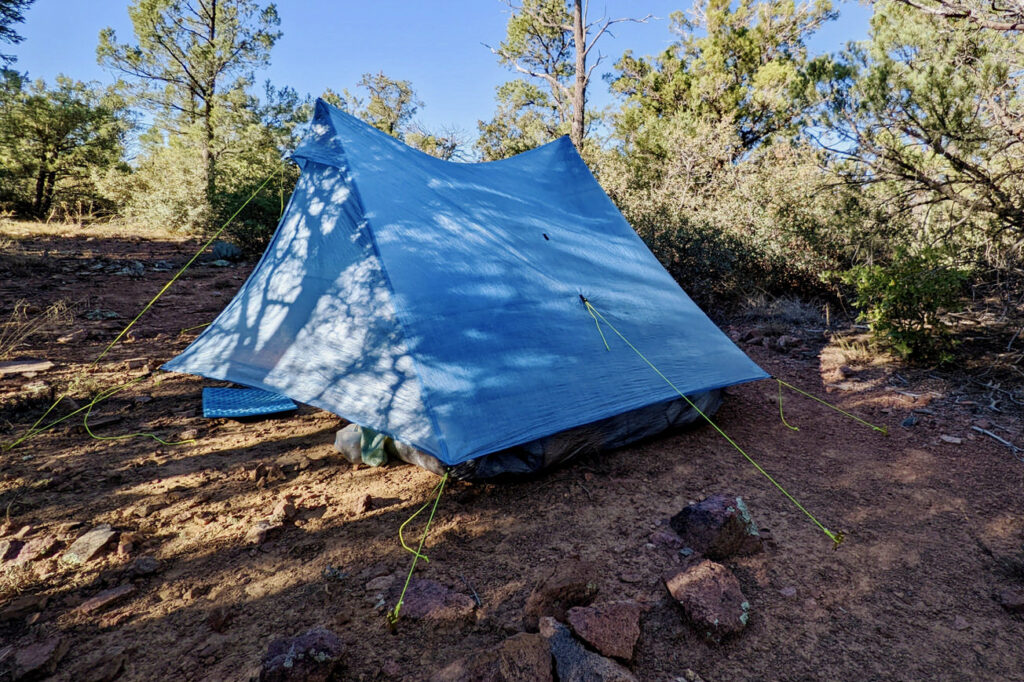
Great ventilation
If you’ve used a single-wall tent before, you’re familiar with the constant battle against interior condensation. To avoid the dreaded drippy interior, a tent needs to be very well ventilated. The Duplex Zip is designed with several effective ventilation solutions, so you can get some good airflow in almost any conditions.
First, Zpacks added peak vents at the apex of each vestibule which are held open by a guyline. Though these aren’t the greatest defenses against condensation buildup, many UL tents – like the standard Duplex and Gossamer Gear The Two – completely omit peak vents. Others, like the HMG Unbound 2, include vestibule vents but don’t provide any way to ensure they stay open. By comparison, the Duplex Zip peak vents are a real perk.
The Duplex Zip is designed with a floating canopy. This means that the DCF canopy tarp is completely separated from the DCF floor by mesh around the entire perimeter. This huge area of mesh can allow for some really nice airflow, but it also serves a really ingenious purpose. At the head and foot, the mesh slopes downward away from the tent interior to provide an escape for condensation as it runs down the walls.
The biggest ventilation benefit lies within the vestibule design though. Mesh walls let surprisingly little air through, and their benefit is greatly diminished with a solid swath of DCF fabric in front of them. The good news is that both sides of the Duplex vestibules can be rolled back and secured with convenient magnetic closures. Rolling back both doors will provide the maximum amount of airflow, or you can roll back one side at a time to balance interior comfort with what the weather is doing.
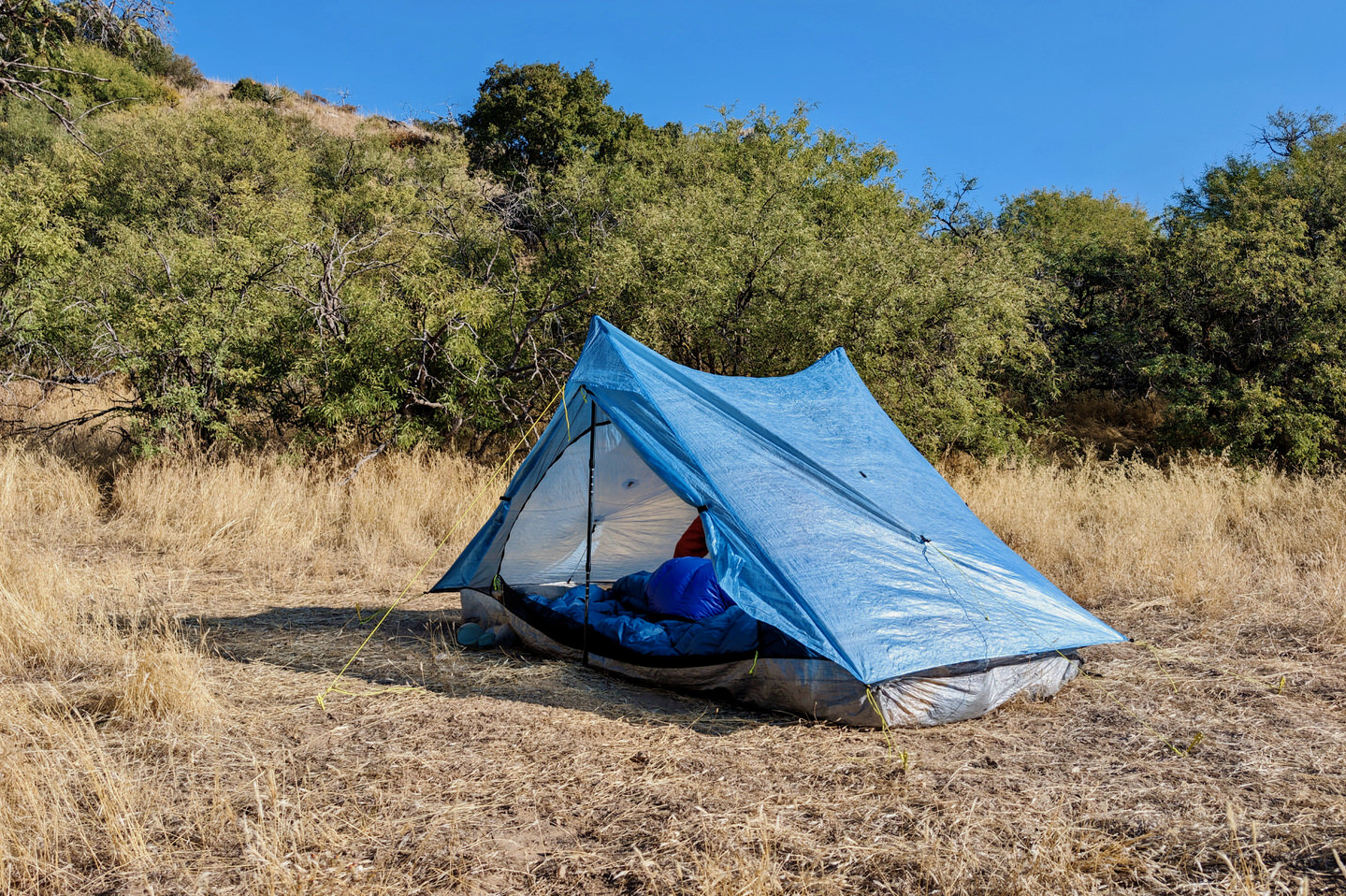
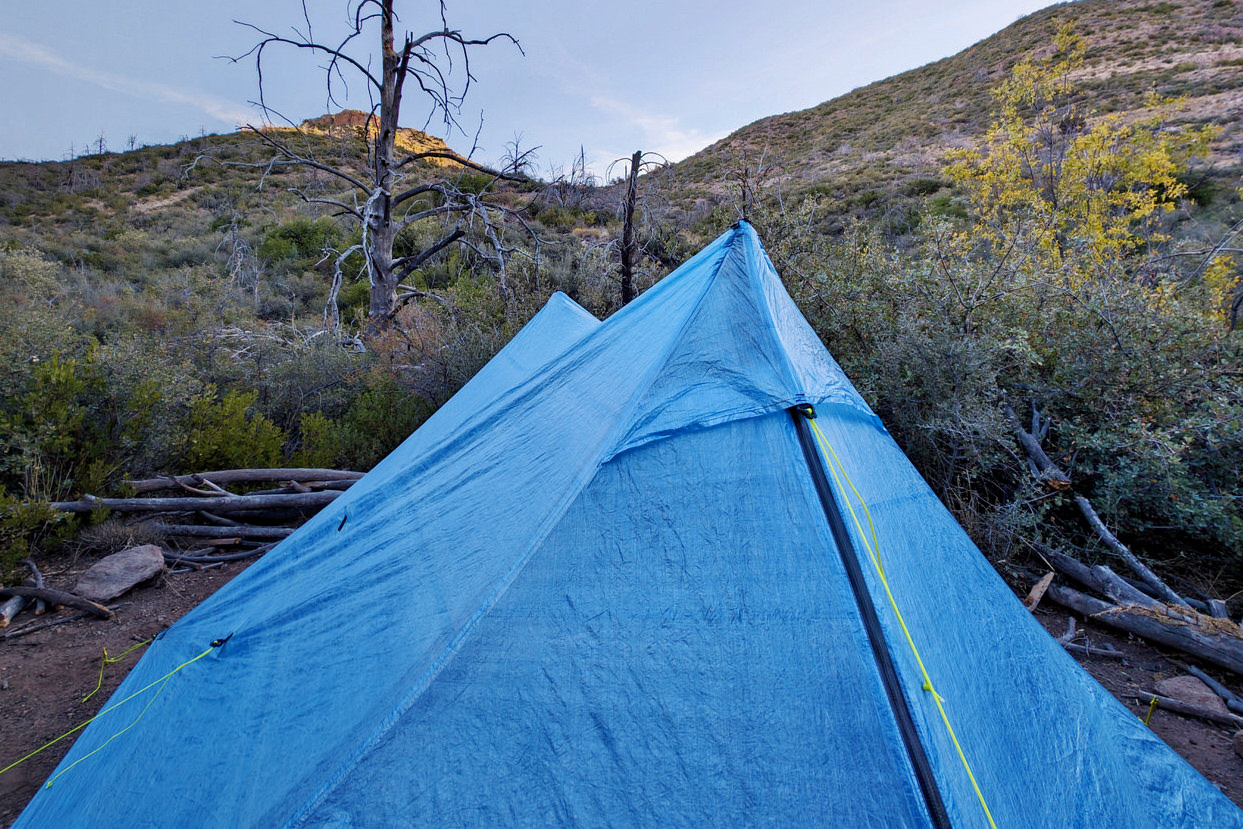
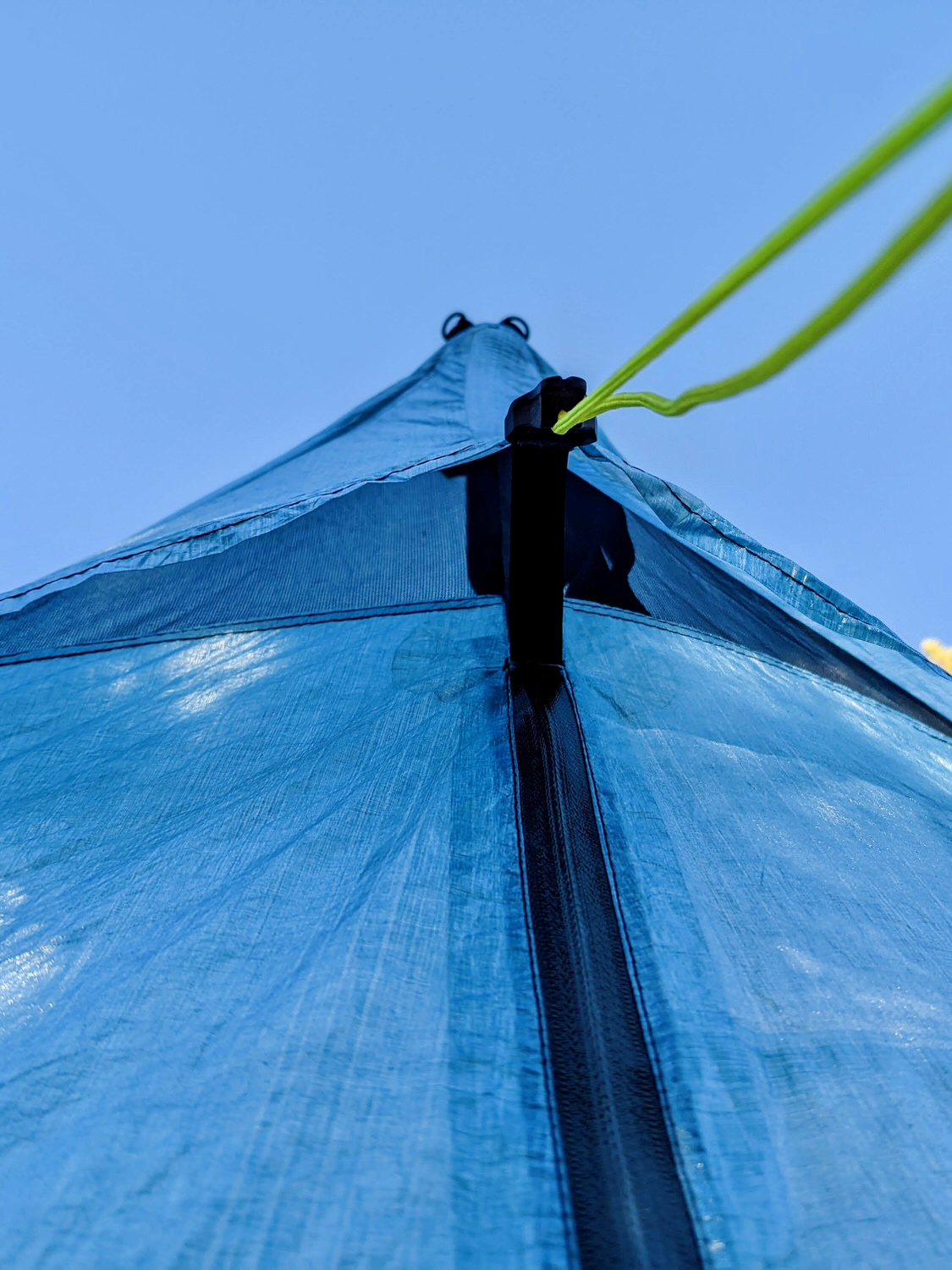
The Duplex Zip is designed with several effective ventilation solutions, so you can get good airflow in almost any conditions.
Spacious
Sometimes in the tent world, ultralight can mean cramped quarters. But the Duplex Zip interior has plenty of space for two hikers and two sets of compact UL gear. Though there’s not enough floor space for two wide pads to fit without seriously impeding the bathtub floor, you could reasonably fit one wide and one regular pad.
Headroom is where the Duplex Zip really shines. Whether you’re sitting up or lying down, there’s plenty of space to move around without wearing the DCF walls as a hat. The symmetrical design and parallel peaks ensure both occupants have plenty of room while sitting side-by-side. We prefer this symmetrical design over tents with offset peaks, like the Durston X-Mid Pro 2, where one person will get the short end of the headroom stick if two hikers are occupying the same side.
The Duplex Zip is plenty big enough for two hikers just needing a place to sleep every night, but pairs wanting a little more wiggle room for playing cards or waiting out rain will love the additional space in the barely heavier Triplex Zip.
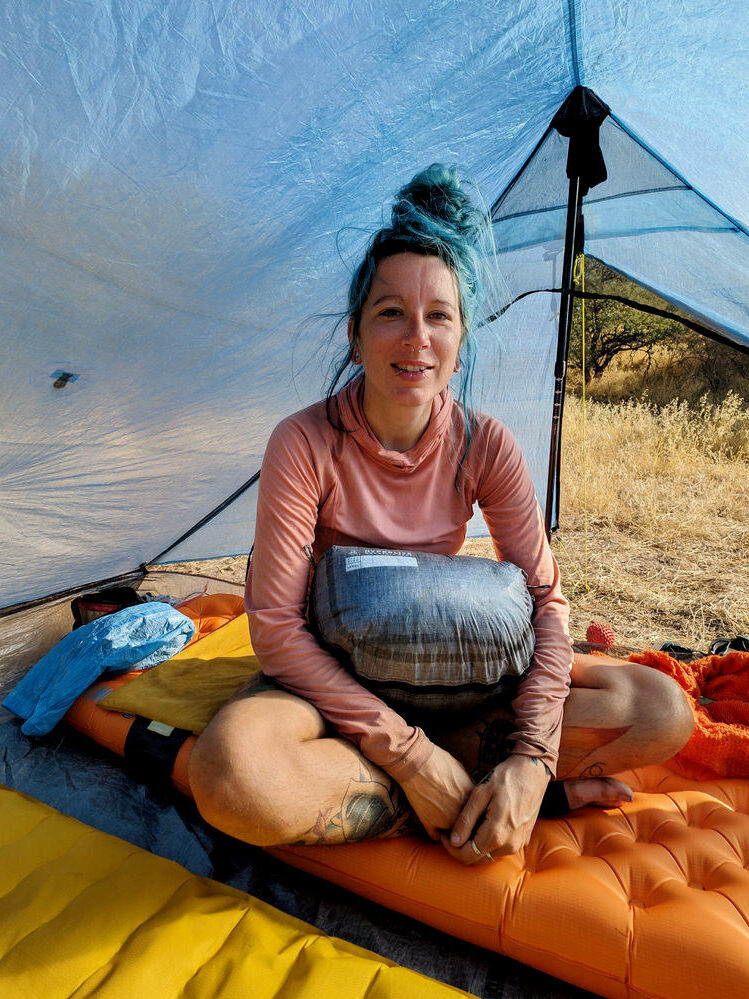
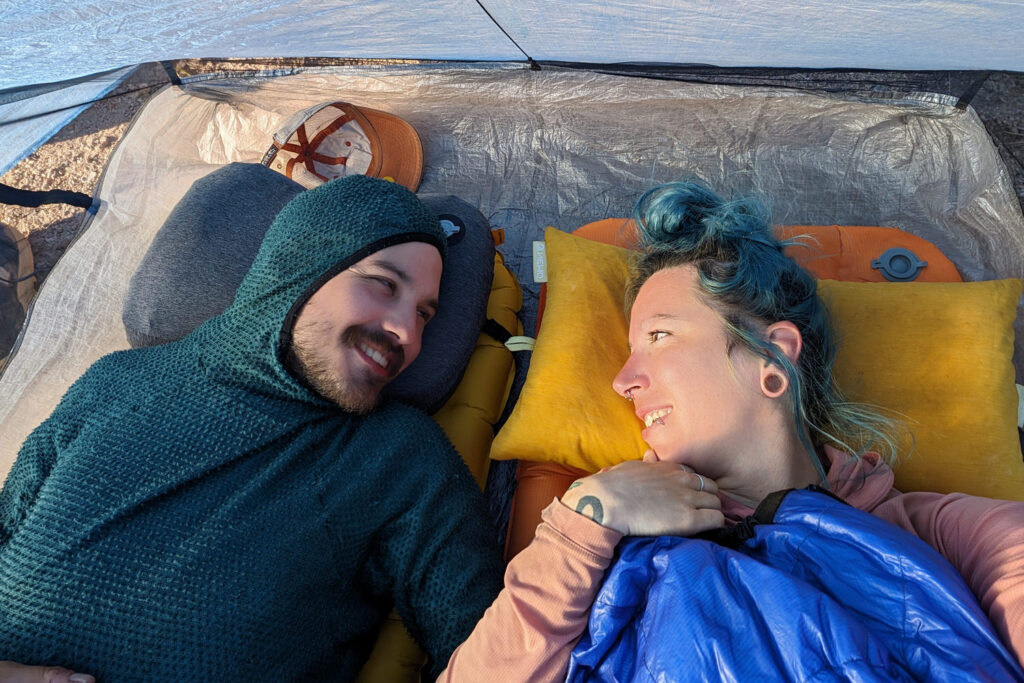
Easy to pitch
Setup is pretty straightforward on the Duplex Zip, and the symmetrical design makes it pretty forgiving on uneven terrain or if the stakes aren’t at exactly 45° from the corners.
That said, this point comes with a slight asterisk – the Duplex Zip is quite quick and easy to set up if you have experience with non-freestanding tents. But even if you’ve never set up a non-freestanding tent before, Zpacks provides an easy-to-follow tutorial video on the product page that will have you pitching your tent like a pro in no time.
Another thing that makes the Duplex easy to pitch is the size and shape of the footprint. Most people would be pleased to have a more spacious tent. But as UL tents get bigger and bigger, we’ve noticed that there’s a point of diminishing returns. A tent like the Durston X-Mid Pro 2 – which has a pretty large footprint – can be a bit limiting when it comes to campsite selection.
Most backcountry campsites are situated in such a way that they make the least impact possible on the environment, which means they tend to be small. In this case, it pays to have a tent with a smaller footprint – like the Duplex Zip – to open up more campsite possibilities. And keep in mind that – as we outlined in the point above – a smaller footprint doesn’t have to mean a tight interior.
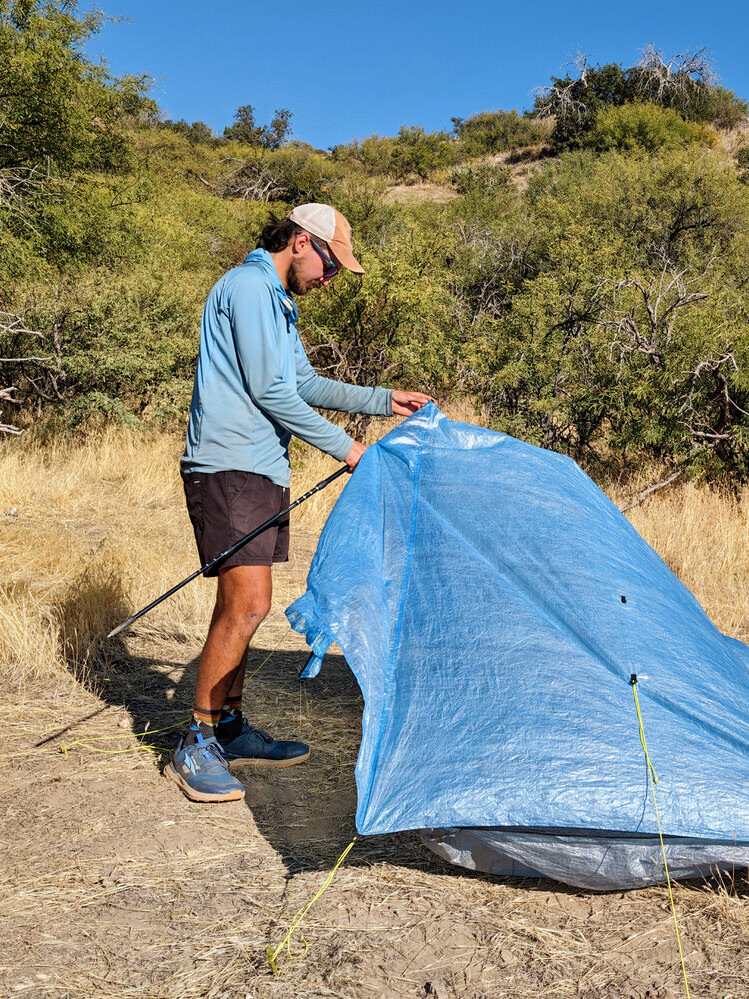
The Duplex Zip is quite quick and easy to set up if you have experience with non-freestanding tents.
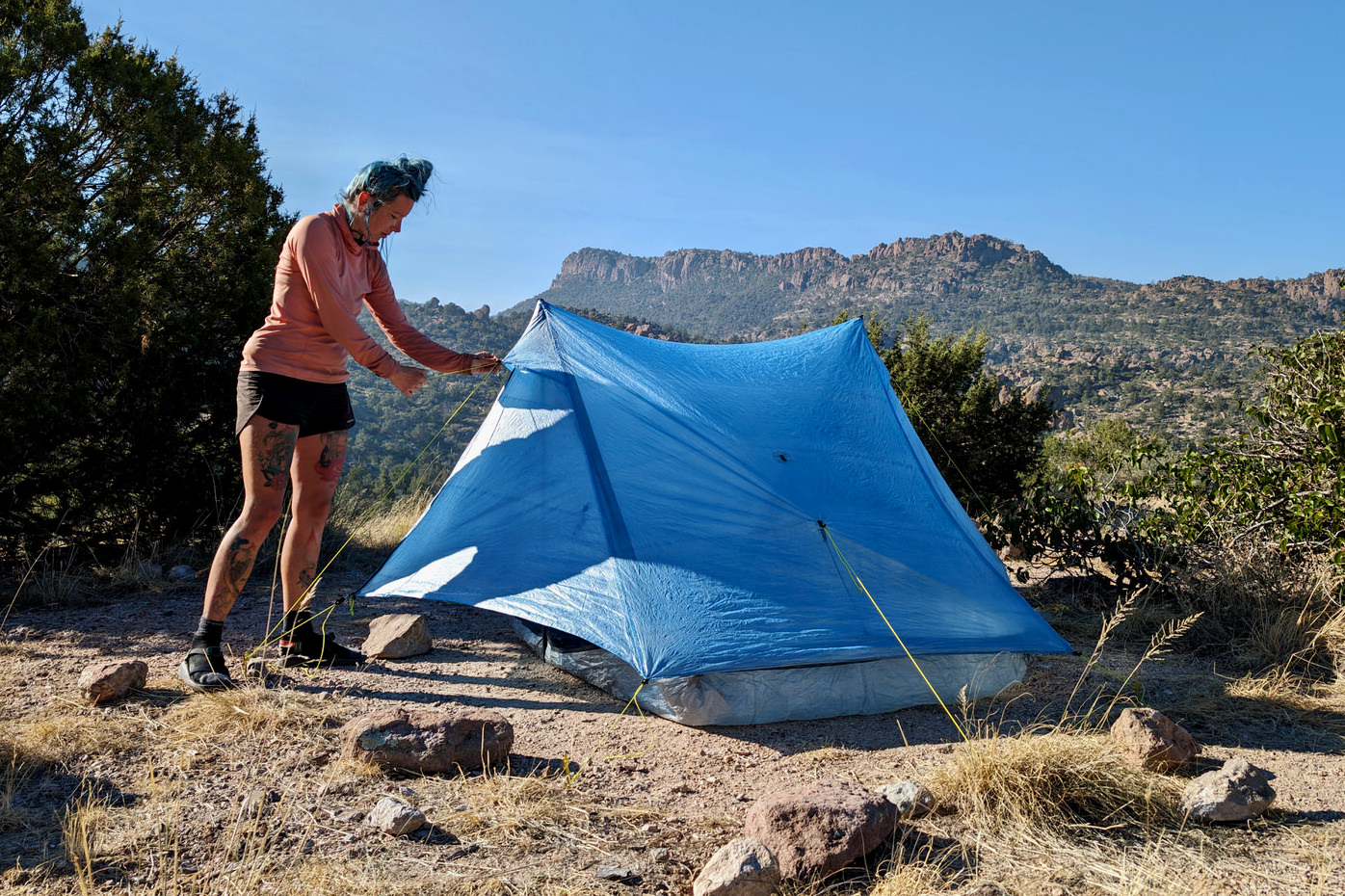
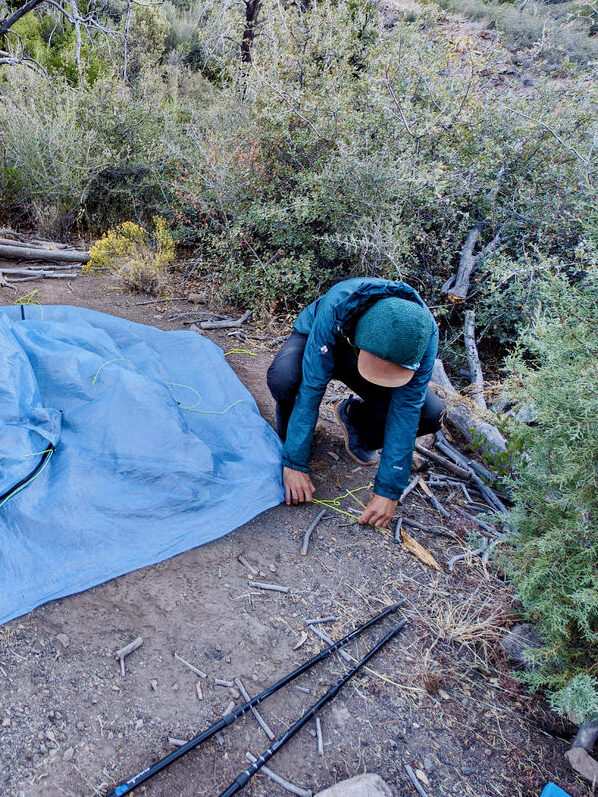
Smooth zippers
This one is pretty straightforward, but it’s a good point of comparison with the very similar Hyperlite Mountain Gear Unbound 2 tent. During testing, we found the waterproof zipper on the Unbound 2 vestibule a little tough to operate. Even after several hundred miles of use, we never got that zipper to a point where we could open it with one hand, and often we needed to loosen the vestibule guyout to get it zipped all the way.
In contrast, the Duplex Zip zipper was smooth and easy to use from the first time we set up this tent. It can be operated with one hand – even when the pitch is really tight. And it just feels smooth going up or down.
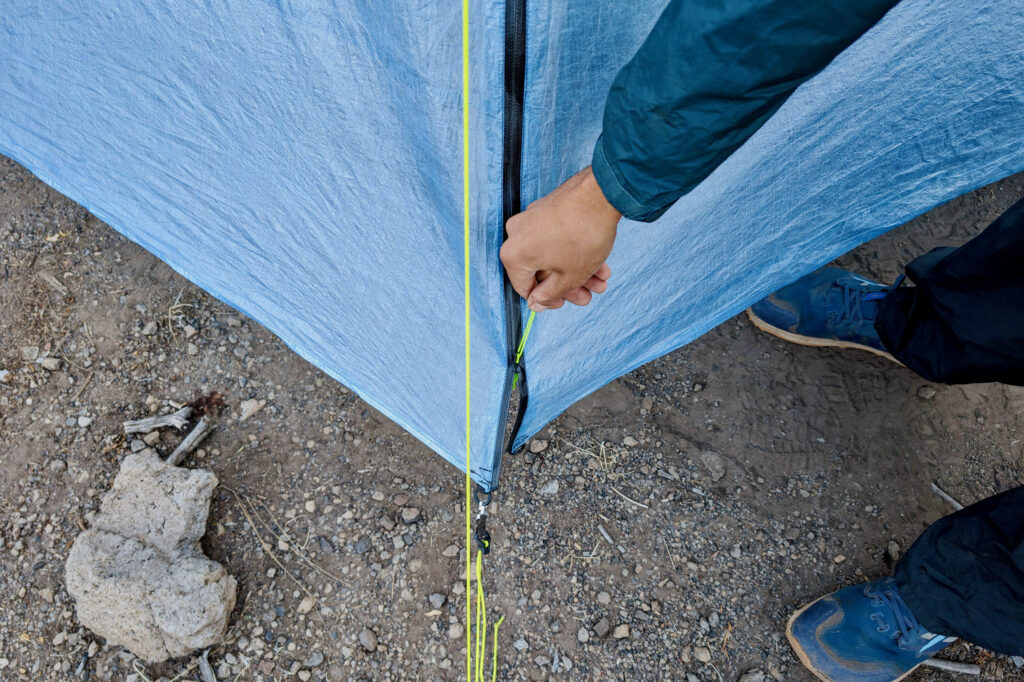
Two large doors & vestibules
Most two-person shelters include two doors and vestibules nowadays, and the Duplex Zip is no exception. The vestibules have plenty of room to store your gear outside if that’s your thing, and the rainbow doors open up wide so it’s easy to get in and out of the tent.
Some hikers don’t love the rainbow door because it can fall onto the ground and cling to dirt and debris when opened up all the way. But we’ve never been bothered by that, and we find that the door is more inclined to fall inward than outward.
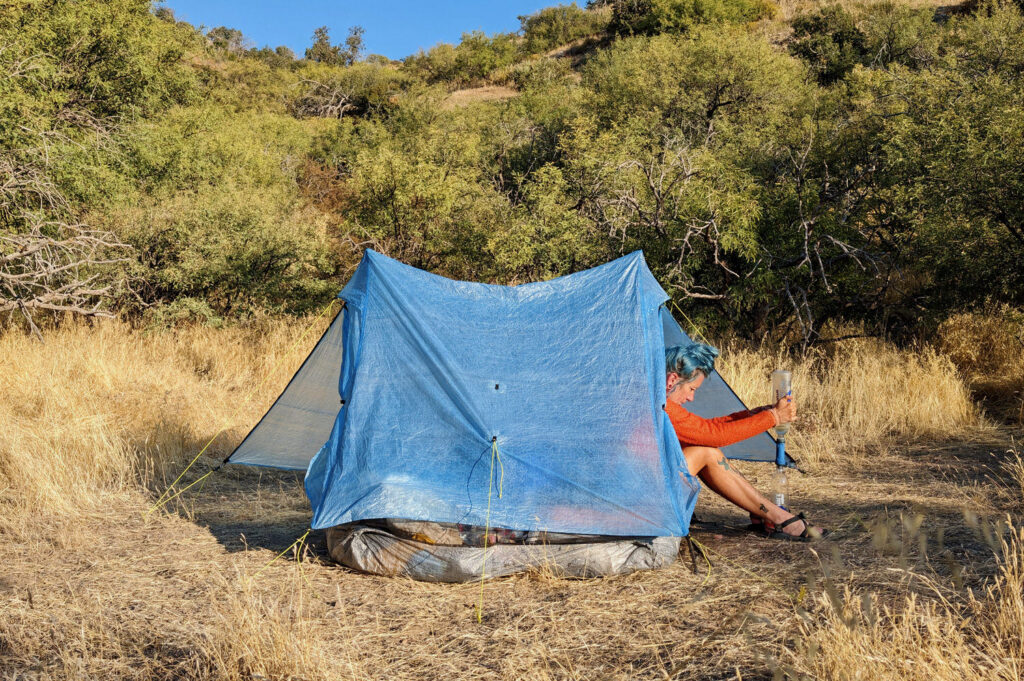
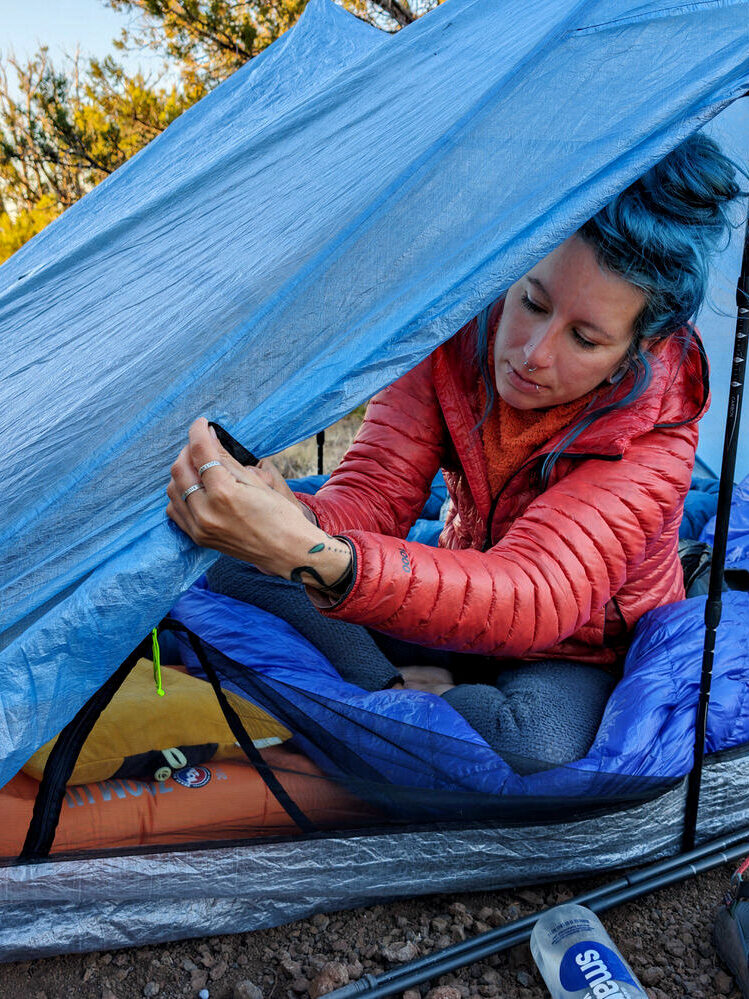
Cons
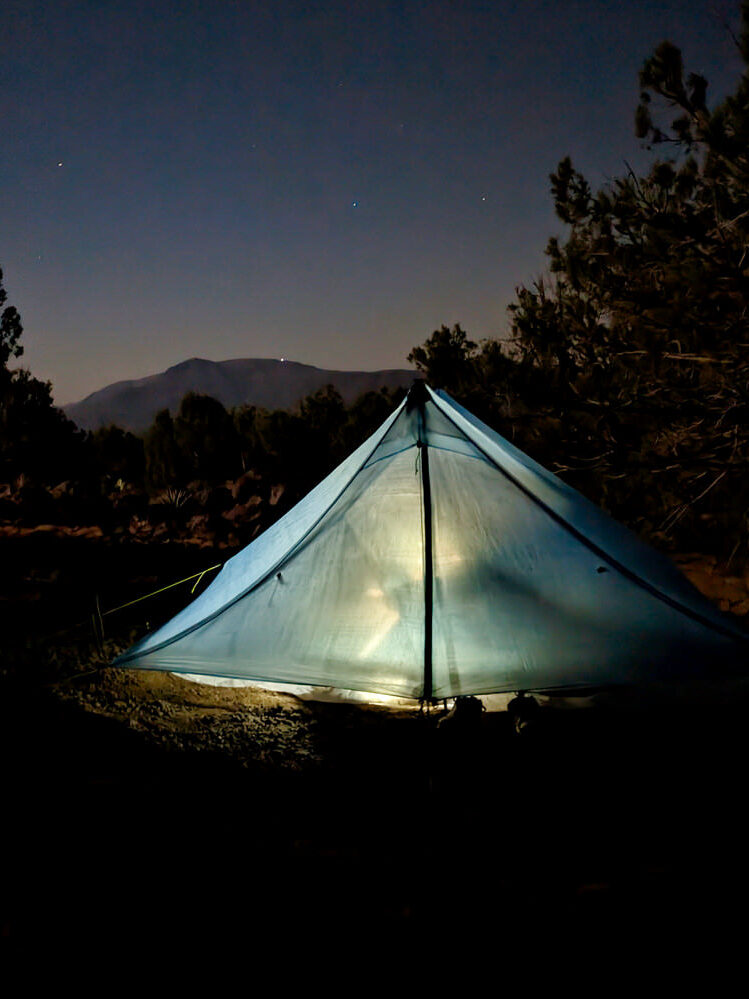
Expensive
The Duplex Zip is more expensive than all the two-person tents on our Best Backpacking Tents list and the second most expensive on our list of the Best Ultralight Tents.
Looking at comparable tents, the standard Duplex costs $30 less and similar tents made from sil-nylon/sil-poly – like the Gossamer Gear The Two – will run you several hundred dollars less. We think the Duplex Zip is definitely worth the added cost over sil-nylon/sil-poly tents if you can swing it because it’s lighter, doesn’t sag when wet, and the fabric itself is waterproof instead of relying on coatings or tape for waterproofing.
But is it worth the extra $30 over the standard Duplex? Since we’ve never found the standard Duplex vestibule flaps to be an issue, we’d save the money and buy that version. But for hikers who often backpack in areas with consistent nasty weather where blowing rain is a big issue, the Duplex Zip may be a worthwhile investment. You really can’t go wrong with either version.
Condensation can be an issue with single-wall tents
We’ve never tested a single-wall tent that was completely immune to interior condensation. But the Duplex Zip has a lot of smart features that help manage moisture as we highlighted in our point above about ventilation.
Still, with the right (or should we say wrong) set of conditions you’ll likely wake up to a damp Duplex interior in the morning. Sleep with the vestibule doors open whenever possible to cut down on the amount of condensation you experience inside.
Don’t let this scare you off from single-wall tents, like the Duplex Zip, though. Interior condensation is a minor inconvenience, and we usually just carry a small Packtowl to wipe down the walls in the mornings.
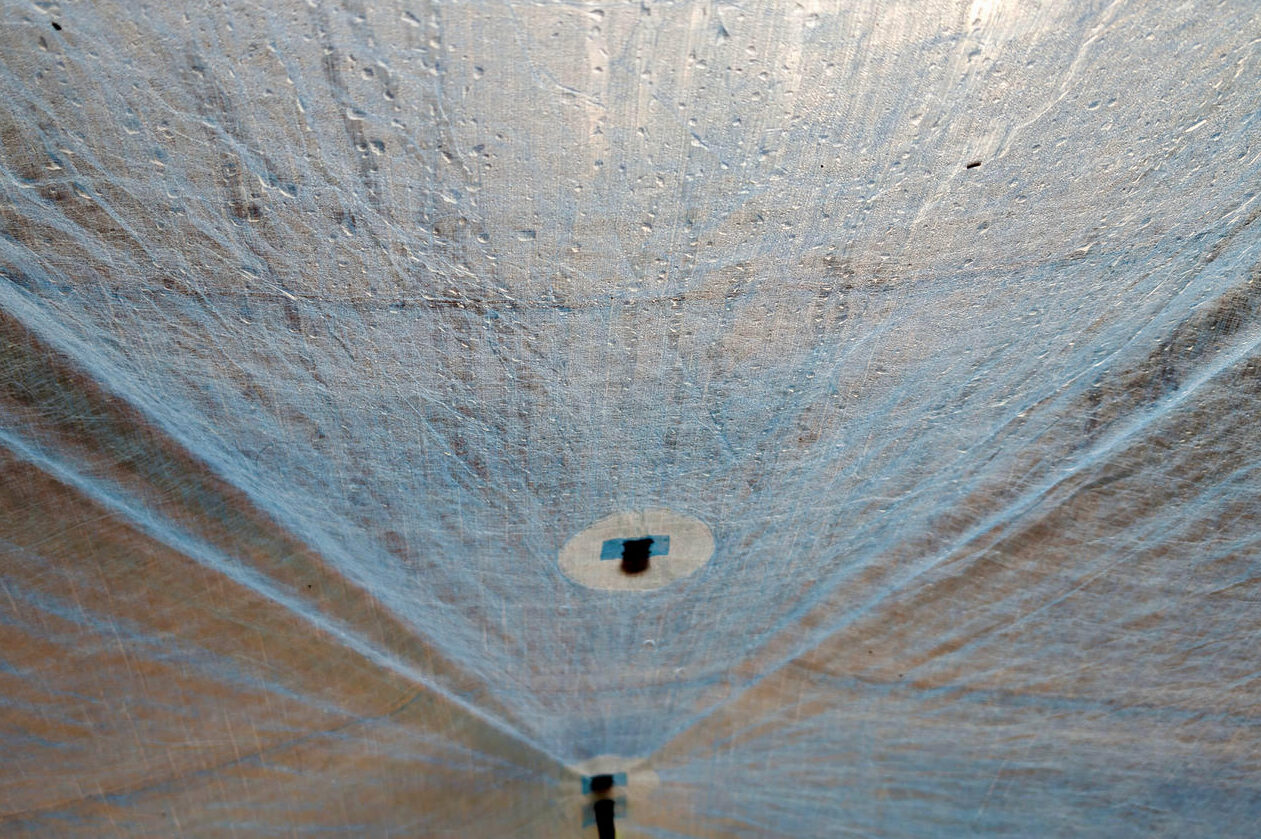
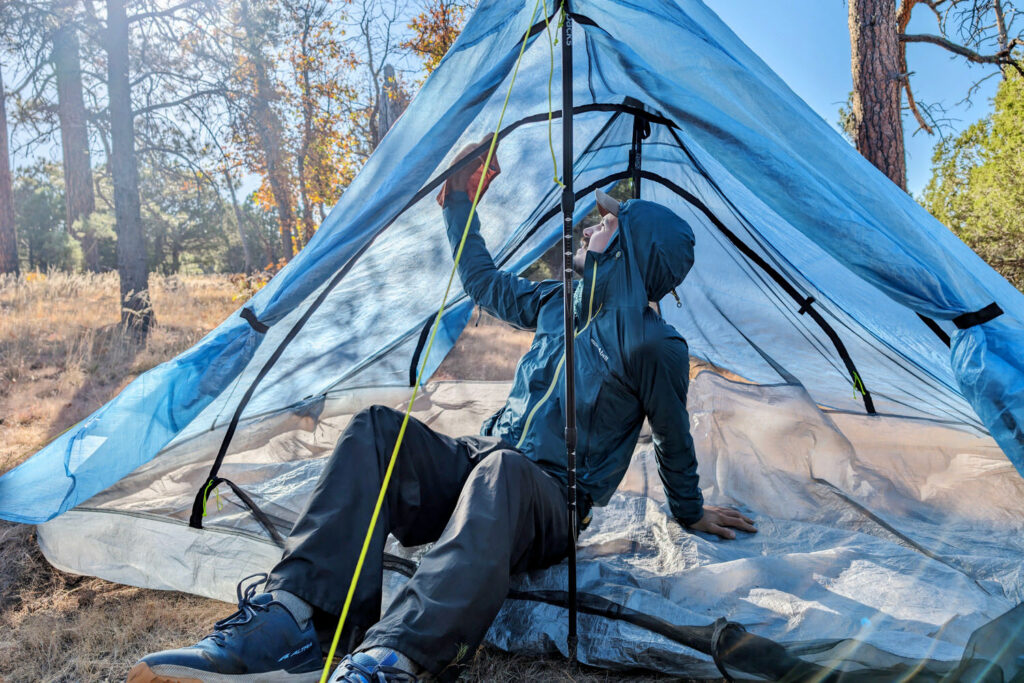
Non-freestanding design can make campsite selection difficult
We love non-freestanding tents for trips where we want to keep weight as low as possible, but they come with potential pitching challenges in some environments. The structure of the Duplex Zip relies on the ability to pull the corner guyouts taut, but hard-packed ground and rocky terrain can make it pretty difficult to get tent stakes secured.
With a little creativity, we’ve never found ourselves in a position where we couldn’t get the tent pitched well enough to get sheltered sleep. We’ve had to tie the corner guylines to rocks, logs, or shrubs on multiple occasions, but there’s almost always a way to get the tent pitched using things in the surrounding environment.
Still, it can be a hassle to pitch this way, so you’ll have to decide if that’s something you want to deal with before purchasing the Duplex Zip or any other non-freestanding tent for that matter.
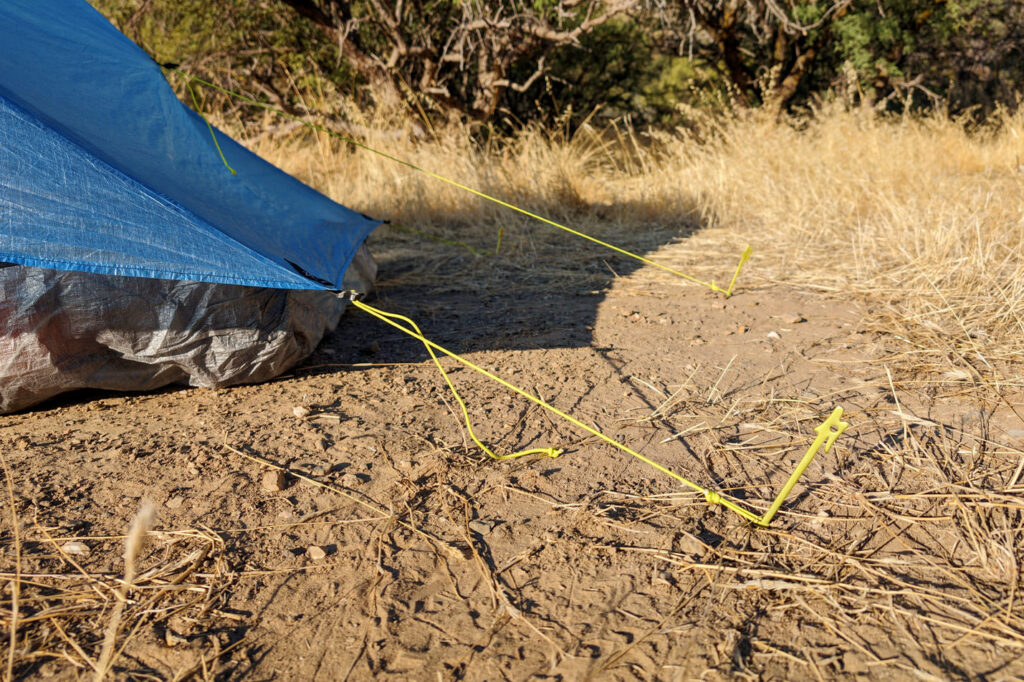
Ultralight materials need to be handled with care
We mentioned in our pro about durability above that we’ve used the Duplex for thousands of miles without any real durability concerns. But this is still a piece of ultralight gear, and as such it really pays to take some extra care when selecting your campsite. Taking time to make sure your site is free from sharp rocks or sticks will go a long way to extend the life of your Duplex.
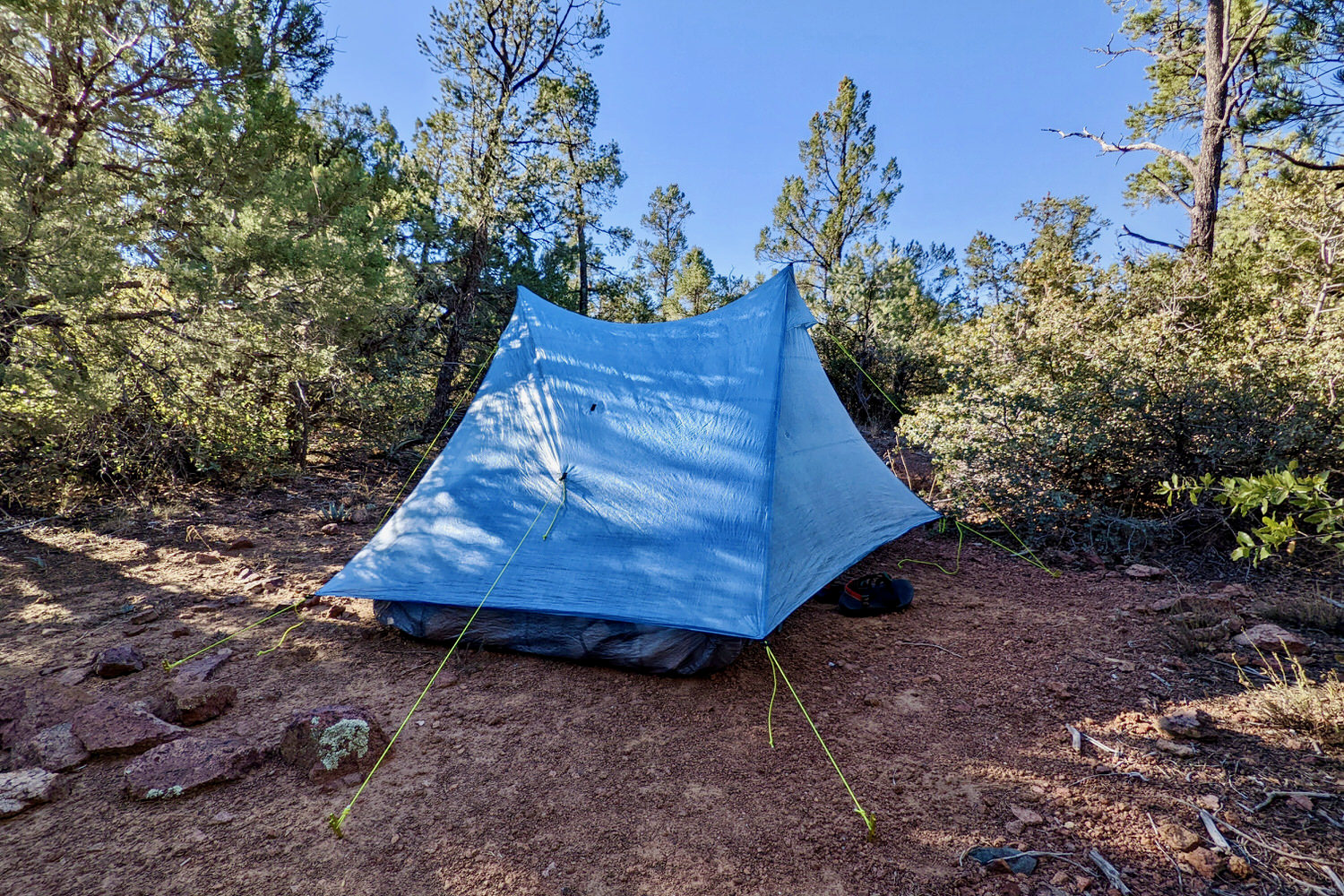
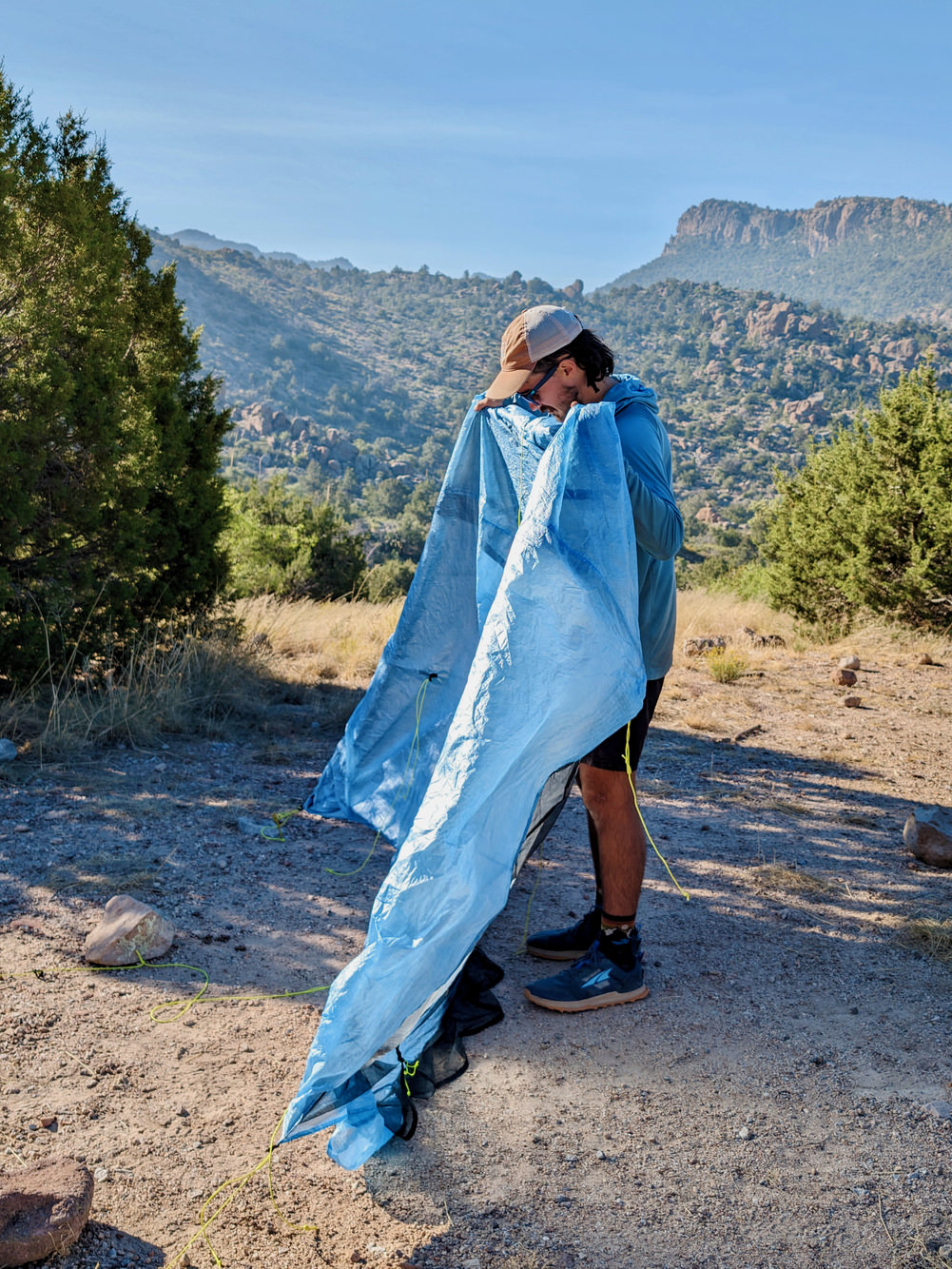
Difficult to shake out dirt & debris
No matter how careful you are, you’re bound to track some debris into the tent. When you roll it up, small twigs and pebbles left inside can damage the Noseeum mesh, so you’ll want to shake the tent out periodically to mitigate the risk.
This is a pretty minor gripe – because it’s really more of an inconvenience than anything – but the non-freestanding design of the Duplex makes it difficult and awkward to shake out. Because the tent will have no structure to hold the doors open when you pick it up, dirt and debris tend to get stuck in the corners. This task is definitely easier if you have two people working at it – one person to hold the door and peak apart and one person to shake the tent – but solo hikers can just turn the whole tent inside out and shake it to get stuff out.
Pockets aren’t the most useful
This is by no means a dealbreaker, but the dinky little pockets in the Duplex Zip are next to useless. When you’re sleeping two inside the tent, the pockets have a tendency to get lost under sleeping pad baffles, and anything in the pockets is at risk of getting squished.
We wouldn’t put anything super important in there, like glasses or a camera, but it’s fine enough to store your headlamp in an easy-to-reach place for nighttime bathroom breaks.
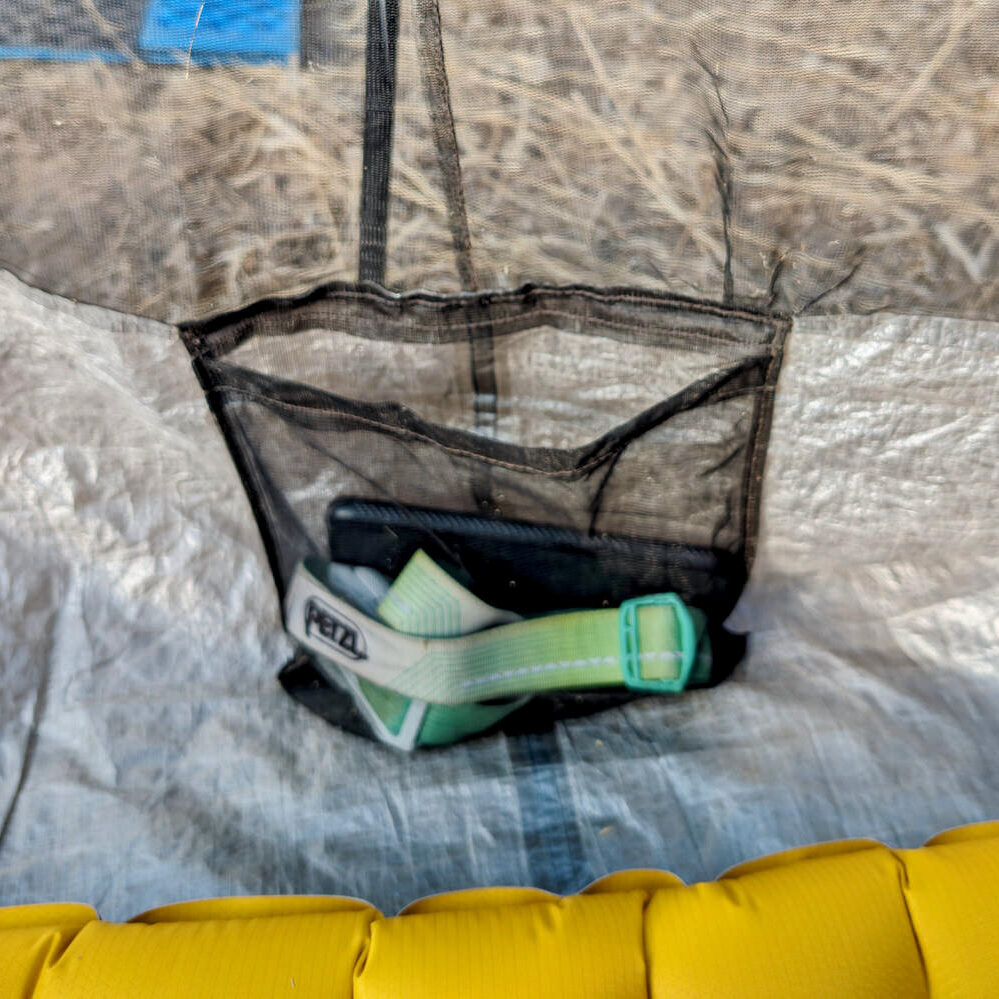
Bottom Line
Overall, we really love the Zpacks Duplex Zip. It’s ultralight, very durable for the weight, and it provides good protection from the elements. Though it’s certainly expensive, we think it’s worth the cost if keeping weight to an absolute minimum is your priority. And since the DCF fabric is a lot tougher than you’d think based on the weight, the Duplex Zip is an investment that can last for thousands of trail miles.
If you’re stuck deciding between the standard Duplex and the Duplex Zip, we recommend really thinking about the types of environments and conditions you like to backpack in. Are you heading out into the Rockies during summer monsoons or are you hitting the Sierra in the mild early fall? Hikers who head to the mountains no matter what the weather is doing may benefit from the additional protection provided by the Duplex Zip, but those who wait for fairer weather will likely prefer to save a bit of money and go with the standard Duplex.
No matter which option you choose, you’ll be getting one of the lightest, most spacious, and toughest ultralight tents on the market. Learn more about how the Duplex Zip stacks up against the competition on our lists of the Best Backpacking Tents and Best Ultralight Tents.
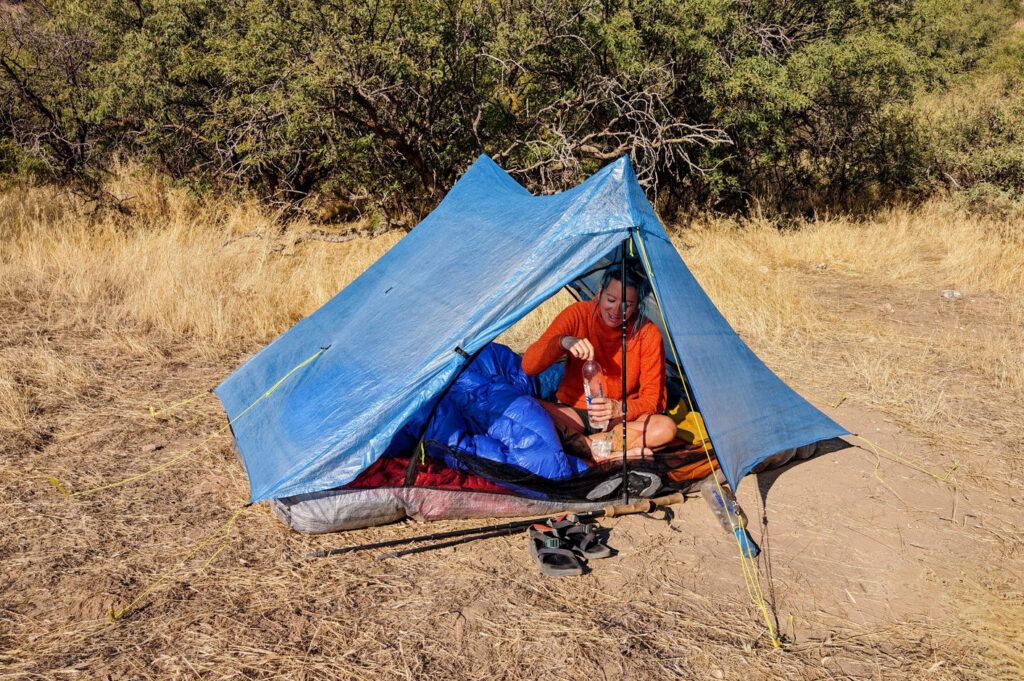
More Information
We hope this review helps you determine if the Zpacks Duplex Zip is right for you. As always, please leave a comment below if you have any recommendations, questions, or suggestions or visit our Facebook page and Instagram to join the community conversation. If you found this review helpful, please share on social media and click the little heart button below to give us a digital high five!
If you liked this list, you’ll love the CleverHiker Gear Guide where we test and recommend tons of outdoor adventure gear from a variety of categories. here are some links to popular articles:
